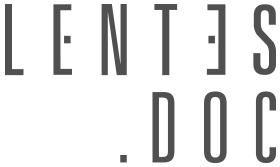With the negative change of 0.1% in the national industry in February, seven out of the 15 areas surveyed by the IBGE recorded negative rates in this indicator in the seasonally-adjusted series.
The most intense drop in February was recorded in Bahia (-2.6%), followed by Ceará (-1.0%), São Paulo (-0.8%), Santa Catarina (-0.6%), Mato Grosso (-0.6%), Rio de Janeiro (-0.3%) and Minas Gerais (-0.2%).
Pernambuco, on the other hand, indicated the sharpest expansion this month, followed by Paraná (2.0%), Pará (1.6%), Espírito Santo (1.1%), Amazonas (0.9%), Northeast Region (0.5%), Rio Grande do Sul (0.5%) and Goiás (0.2%).
As for the quarterly moving average (-0.1%), six of the 15 areas surveyed recorded negative rates in the quarter ended February, with significant drops found in Pernambuco (-6.5%), Pará (-4.1%), Mato Grosso (-2.9%), Paraná (-1.1%) and Northeast Region (-1.0%).
| Short-Term Indicators of Industry Regional Results February 2025 |
||||
|---|---|---|---|---|
| Areas | Change (%) | |||
| February 2025/January 2025* | February 2025/February 2024 | Cumulative January-February | Cumulative in the last 12 months | |
| Amazonas | 0.9 | -2.9 | -2.2 | 0.9 |
| Pará | 1.6 | 5.1 | 3.0 | 5.7 |
| Northeast Region | 0.5 | -4.7 | -3.8 | 1.5 |
| Maranhão | - | -4.0 | -7.9 | 1.0 |
| Ceará | -1.0 | -0.2 | -0.1 | 5.4 |
| Rio Grande do Norte | - | -24.5 | -19.8 | -1.1 |
| Pernambuco | 6.5 | -21.3 | -19.7 | 0.8 |
| Bahia | -2.6 | -1.5 | 1.6 | 1.8 |
| Minas Gerais | -0.2 | -0.7 | -0.5 | 1.6 |
| Espírito Santo | 1.1 | -11.6 | -10.3 | -4.2 |
| Rio de Janeiro | -0.3 | -3.3 | -2.7 | -1.5 |
| São Paulo | -0.8 | 1.2 | 0.9 | 2.6 |
| Paraná | 2.0 | 5.5 | 3.3 | 4.1 |
| Santa Catarina | -0.6 | 6.0 | 7.6 | 7.7 |
| Rio Grande do Sul | 0.5 | -1.2 | 3.5 | 0.3 |
| Mato Grosso do Sul | - | -2.9 | -6.4 | 1.9 |
| Mato Grosso | -0.6 | 1.2 | 1.3 | 4.3 |
| Goiás | 0.2 | -0.1 | 0.1 | 1.0 |
| Brazil | -0.1 | 1.5 | 1.4 | 2.6 |
| Source: IBGE. Diretoria de Pesquisas. Coordenação de Estatísticas Conjunturais em Empresa *Seasonally-Adjusted series |
||||
In the negative change of 0.1% of national industry from January to February, in the seasonally-adjusted series, seven of the 15 areas surveyed recorded positive rates. Bahia (-2.6%) recorded the sharpest drop and interrupted two consecutive months of positive rates, a period when it accumulated a gain of 5.2%. Ceará (-1.0%), São Paulo (-0.8%), Santa Catarina (-0.6%), Mato Grosso (-0.6%), Rio de Janeiro (-0.3%) and Minas Gerais (-0.2%) were the other places that posted negative indexes in February 2025.
On the other hand, Pernambuco (6.5%) had the greatest high this month and eliminated part of the 25.1% decrease seen in January 2025. Paraná (2.0%), Pará (1.6%), Espírito Santo (1.1%), Amazonas (0.9%), Northeast Region (0.5%), Rio Grande do Sul (0.5%) and Goiás (0.2%) also marked positive results in February 2025.
The quarterly moving average index of industry showed a negative change (-0.1%) in the quarter ended in February 2025 compared to the level of the previous month, after also registering losses in January 2025 (-0.4%) and in December 2024 (-0.4%). Six of the 15 places surveyed recorded negative rates this month, with a highlight to the most significant decreases recorded by Pernambuco (-6.5%), Pará (-4.1%), Mato Grosso (-2.9%), Paraná (-1.1%) and Northeast Region (-1.0%). Conversely, Amazonas (1.1%) and Bahia (0.8%) posted the main advances in February 2025.
Compared with February 2024, the national industry increased 1.5% in February 2025, with five out of the eighteen places surveyed recording positive figures. It is worth mentioning that February 2025 (20 days) had one business day more than in the same month a year ago (19). In the month, Santa Catarina (6.0%), Paraná (5.5%) and Pará (5.1%) recorded the main decreases.
In Santa Catarina, the high was mainly leveraged by the positive behavior in the sectors of machinery and equipment (parts and pieces for valves, taps, lifting or transporting devices for goods and machines or devices for the agricultural sector), non-metallic mineral products (ceramic tiles, plates and tiles for paving or covering, concrete mass and “Portland” cements), metal products (aluminum frames), manufacture of wearing apparel and accessories (shirts, T-shirts, blouses and the like for professional use, long trousers and Bermuda shorts, overalls, shorts and the like for women) and electrical machines, devices and materials (frames, panels, cabins and other supports with electrical switching or protection devices, refrigerators or freezers for domestic use and transformers).
In the case of Paraná, the influence was of the positive behavior in the sectors of motor vehicles, trailers and bodies (cars, trucks, tractor-trucks for trailers and semi-trailers and auto parts), coke, petroleum products and biofuels (diesel fuel, motor gasoline and aviation kerosene), chemical products (mineral or chemical fertilizers of the NPK formulas, urea and insecticides, fungicides and herbicides – all for agricultural use) and machinery and equipment (loaders-transporters, backhoes and drilling and probing machines – used in petroleum prospecting).
In Pará, the the influence came from mining and quarrying industries (raw or processed manganese ores). Mato Grosso (1.2%) and São Paulo (1.2%) were the other places with expansion in the monthly index of February.
On the other hand, double-digit and higher declines were observed in Rio Grande do Norte (-24.5%), largely driven by the activities of coke, petroleum products and biofuels (motor gasoline and diesel fuel); in Pernambuco (-21.3%), influenced by the activities of coke, petroleum products and biofuels (diesel fuel, liquefied petroleum gas and fuel oils); and in Espírito Santo (-11.6%), influenced by mining and quarrying industries (pelletized or sintered iron ores, crude petroleum oils and natural gas).
Northeast Region (-4.7%), Maranhão (-4.0%), Rio de Janeiro (-3.3%), Amazonas (-2.9%), Mato Grosso do Sul (-2.9%), Bahia (-1.5%), Rio Grande do Sul (-1.2%), Minas Gerais (-0.7%), Ceará (-0.2%) and Goiás (-0.1%) also showed negative results in the monthly index for February 2025.
The cumulative index for the year 2025, compared to the same period in 2024, showed a 1.4% expansion in the industrial sector, with positive rates in eight of the 18 locations surveyed.
Santa Catarina (7.6%) recorded the sharpest expansion in the cumulative index for the two months of 2025, driven largely by the activities of machinery and equipment (valves, taps and their parts and pieces, lifting or transporting devices for goods, machinery or devices for the agricultural sector and centrifugal pumps), food products (fish preparations and canned fish, sausages or salami products and other preparations of pork and poultry meat, frozen poultry meat and offal and ice cream and popsicles), electrical machinery, devices and materials (panels, panels, cabins and other supports with electrical interruption or protection devices, refrigerators or freezers for domestic use, alternating or direct current electric motors and transformers), non-metallic mineral products (ceramic tiles, plates and tiles for paving or covering, concrete mass and “Portland” cements) and metal products (aluminum frames).
Rio Grande do Sul (3.5%), Paraná (3.3%), Pará (3.0%) and Bahia (1.6%) also showed positive rates above the national average (1.4%), while Mato Grosso (1.3%), São Paulo (0.9%) and Goiás (0.1%) completed the set of areas with growth in production in the cumulative index for the first two months of 2025.
On the other hand, Rio Grande do Norte (-19.8%), Pernambuco (-19.7%) and Espírito Santo (-10.3%) recorded double-digit declines and the sharpest results in the cumulative index for January-February 2025, pressured mainly by the negative behavior coming from the activities of coke, petroleum products and biofuels (motor gasoline and diesel fuel), in the first area; of coke, petroleum products and biofuels (diesel fuel, liquefied petroleum gas and fuel oils), in the second; and mining and quarrying industries (pelletized or sintered iron ore, crude oil and natural gas) in the last one.
Maranhão (-7.9%), Mato Grosso do Sul (-6.4%), Northeast Region (-3.8%), Rio de Janeiro (-2.7%), Amazonas (-2.2%), Minas Gerais (-0.5%) and Ceará (-0.1%) also showed negative results in the cumulative index for the year.
The cumulative index for the last twelve months, having advanced 2.6% in February 2025, continued to show a positive rate, but reduced the pace of growth compared to the results of the previous months. In regional terms, fifteen of the 18 locations surveyed recorded positive rates in February 2025, but fifteen showed less dynamism compared to the indexes of last January.
Rio Grande do Norte (from 3.4% to -1.1%), Pernambuco (from 2.9% to 0.8%), Espírito Santo (from -2.5% to -4.2%), Amazonas (from 2.6% to 0.9%), Rio Grande do Sul (from 1.6% to 0.3%), Ceará (from 6.5% to 5.4%), Rio de Janeiro (from -0.6% to -1.5%), Goiás (from 1.8% to 1.0%) and Mato Grosso do Sul (from 2.7% to 1.9%) recorded the main losses between January and February 2025, while Pará (from 5.4% to 5.7%) and Paraná (from 3.9% to 4.1%) showed the gains between the two periods.
IBGE updates seasonal adjustment methods for short-term surveys
The Brazilian Institute of Geography and Statistics (IBGE) will update the parameters of the seasonal adjustment methods for the Monthly Survey of Industry: Physical Production (PIM-PF) Brazil, Monthly Survey of Industry: Regional Physical Production (PIM-PF), Monthly Survey of Tade (PMC) and Monthly Survey of Services (PMS).
This is a routine procedure, last carried out in April 2022, with the aim of incorporating the data available from the most recent periods. The statistical modeling applied makes it possible to remove the seasonal and calendar effects from the time series of these surveys, which does not imply any change in the original data.
The full technical and methodological notes for each survey can be accessed here. For more information on Seasonal Adjustment of Time Series, click here. The results of the update of the seasonal adjustment methods will be made available on the day each survey is released: Monthly Survey of Industry (PIM) Brazil - April 2, at 9 am; Regional Monthly Survey of Industry (PIM) - April 8, at 9 am; Monthly Survey of Trade (PMC) - April 9, at 9 am; Monthly Survey of Services (PMS) - April 10, at 9 am.


